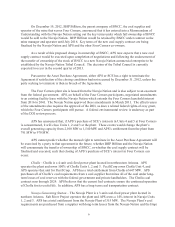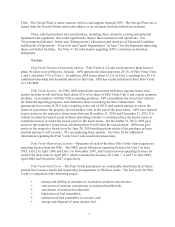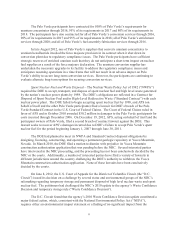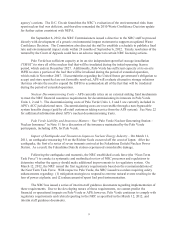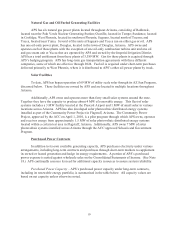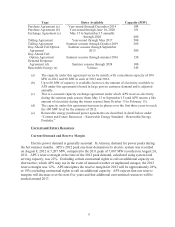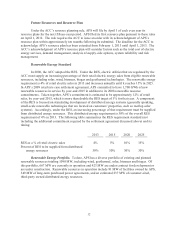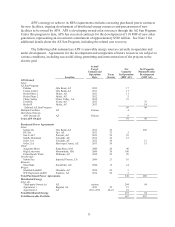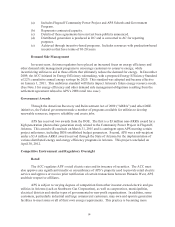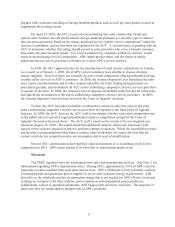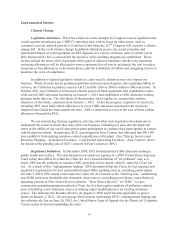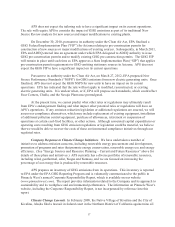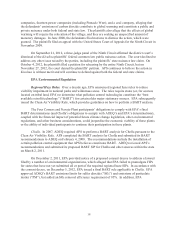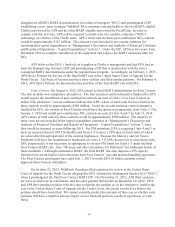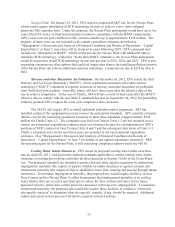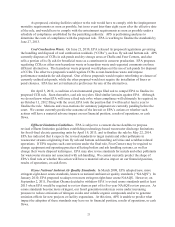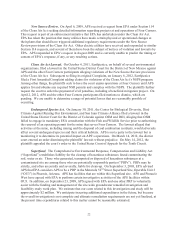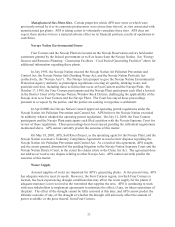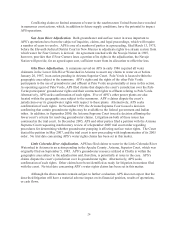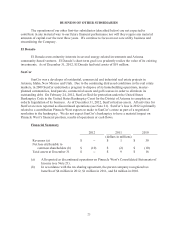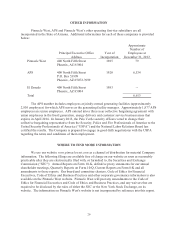APS 2012 Annual Report Download - page 40
Download and view the complete annual report
Please find page 40 of the 2012 APS annual report below. You can navigate through the pages in the report by either clicking on the pages listed below, or by using the keyword search tool below to find specific information within the annual report.
16
Environmental Matters
Climate Change
Legislative Initiatives. There have been no recent attempts by Congress to pass legislation that
would regulate greenhouse gas (“GHG”) emissions and, with its focus on other issues, such as
economic recovery and job growth, it is unclear if and when the 113th Congress will consider a climate
change bill. In the event climate change legislation ultimately passes, the actual economic and
operational impact of such legislation on APS depends on a variety of factors, none of which can be
fully known until a law is enacted and the specifics of the resulting program are established. These
factors include the terms of the legislation with regard to allowed emissions; whether any permitted
emissions allowances will be allocated to source operators free of cost or auctioned; the cost to reduce
emissions or buy allowances in the marketplace; and the availability of offsets and mitigating factors to
moderate the costs of compliance.
In addition to federal legislative initiatives, state-specific initiatives may also impact our
business. While Arizona has no pending legislation and no proposed agency rule regulating GHGs in
Arizona, the California legislature enacted AB 32 and SB 1368 in 2006 to address GHG emissions. In
October 2011, the California Air Resources Board approved final regulations that established a state-
wide cap on GHG emissions beginning on January 1, 2013 and established a GHG allowance trading
program under that cap. The first phase of the program, which applies to, among other entities,
importers of electricity, commenced on January 1, 2013. Under the program, importers of electricity,
including APS, must hold carbon allowances to cover GHG emissions associated with electricity
imported into California from outside the state. APS is authorized to recover the cost of these carbon
allowances through the PSA.
We are monitoring Arizona regulatory activities and other state legislative developments to
understand the extent to which they may affect our business, including our sales into the impacted
states or the ability of our out-of-state power plant participants to continue their participation in certain
coal-fired power plants. In particular, SCE, a participant in Four Corners, has indicated that SB 1368
may prohibit it from making emission control expenditures at the plant. (See “Energy Sources and
Resource Planning – Generation Facilities – Coal-Fueled Generating Facilities – Four Corners” above
for details of the pending sale of SCE’s interest in Four Corners to APS.)
Regulatory Initiatives. In December 2009, EPA determined that GHG emissions endanger
public health and welfare. This determination was made in response to a 2007 United States Supreme
Court ruling that GHGs fit within the Clean Air Act’s broad definition of “air pollutant” and, as a
result, EPA has the authority to regulate GHG emissions of new motor vehicles under the Clean Air
Act. As a result of this “endangerment finding,” EPA determined that the Clean Air Act required new
regulatory requirements for new and modified major GHG emitting sources, including power plants.
On June 3, 2010, EPA issued a rule under the Clean Air Act, known as the “tailoring rule,” establishing
new GHG emissions thresholds that determine when sources, including power plants, must obtain air
operating permits or New Source Review permits. “New Source Review,” or “NSR,” is a pre-
construction permitting program under the Clean Air Act that requires analysis of pollution controls
prior to building a new stationary source or making major modifications to an existing stationary
source. The tailoring rule became effective on August 2, 2010 and it became applicable to power
plants on January 2, 2011. Several groups filed lawsuits challenging EPA’s endangerment finding and
the tailoring rule, but on June 26, 2012, the United States Court of Appeals for the District of Columbia
Circuit issued its decision upholding the rules.


